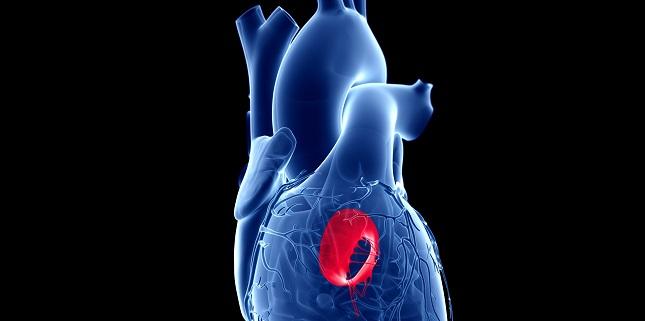‘Suboptimal’ Outcomes in Real-world Mitral Valve-in-Valve, Valve-in-Ring: VIVID Registry
Mitral operators should focus on improving postprocedural hemodynamics to improve survival, Danny Dvir says.

Substantial mitral regurgitation and stenosis are common among patients who undergo mitral valve-in-valve or valve-in-ring procedures following a prior surgical repair or replacement, according to new data from the VIVID registry.
To address these suboptimal outcomes, operators need to focus on achieving excellent hemodynamics at the end of the mitral procedure, just as they do when performing aortic valve-in-valve procedures, say investigators.
“We need to try our best to have lower gradients and less mitral regurgitation,” senior investigator Danny Dvir, MD (University of Washington, Seattle), told TCTMD.
For the study, presented last week at the PCR e-Course 2020 by Matheus Simonato, MD (Federal University of São Paulo, Brazil), researchers included 1,079 patients from 90 centers in the VIVID registry with recurrent mitral valve failure after previous surgical valve repair or replacement who underwent mitral valve-in-ring (n = 222) or valve-in-valve (n = 857) procedures between March 2006 and March 2020. The median STS-PROM score was 8.6%—7.4% for valve-in-ring and 9.0% for valve-in-valve.
After a median follow-up period of 492 days, patients who underwent valve-in-valve were more likely to survive than those who had valve-in-ring procedures (62.5% vs 49.7%; P = 0.002). Patients with an STS score of at least 8% were less likely to survive (54.1% vs 66.8%; P < 0.001).
The overall postprocedural mean gradient across the mitral valve was 5.7 mmHg, with 61.4% of patients having a mean gradient of at least 5 mmHg. The researchers also found significant mitral stenosis—defined as mean gradient of at least 10 mm Hg—among 8.2% and 12.0% of the valve-in-valve and valve-in-ring patients, respectively (P = 0.09).
Valve-in-ring patients were more likely to report significant mitral regurgitation than those who underwent valve-in-valve procedures (16.6% vs 3.1%; P < 0.001), and this was associated with worse survival at 4 years compared with those with less than moderate regurgitation (35.1% vs 61.6%; P = 0.02). Notably, significant mitral stenosis did not affect survival (66.1% vs 60.5%; P = 0.89).
Device success as defined by MVARC was low for both mitral valve-in-valve and valve-in-ring procedures (47.0% vs 32.0%; P < 0.001), although this was mostly due to patients having a greater than 5 mm Hg mean gradient.
Independent correlates of significant residual mitral stenosis were smaller true internal diameter, younger age, and higher BMI, while a valve-in-ring procedure was the only predictor of significant residual mitral regurgitation. Independent predictors for repeat mitral valve replacement were significant residual mitral stenosis and significant residual mitral regurgitation.
Future Focus on Hemodynamics
“Historically, we and others described that the results of mitral valve-in-ring procedures are suboptimal, but patient mortality is relatively high at 1 year,” Dvir said. “Now, we see that indeed also in longer follow-up there is an issue with patient survival after mitral valve-in-ring procedures.”
Mayra Guerrero, MD (Mayo Clinic, Rochester, MN), who was not involved in the study, told TCTMD in an email that she was surprised to see the presence of significant mitral stenosis did not affect patient survival. “I would have expected lower survival as the one seen in patients with moderate or greater MR,” she said.
Because MVARC defines a successful procedure to be one in which the postprocedural mean gradient is less than 5 mm Hg, “the majority of the cases” here should be considered unsuccessful, Dvir said. “We saw [a] mean gradient between 5 and 10, which is considered not okay by MVARC, [and] is not associated with poor clinical outcomes. We didn't see that patients needed more reintervention or that they were more symptomatic. However, patients that have mean gradient above 10 after mitral valve-in-valve or valve-in-ring procedures—above 10 is quite a lot for the mitral position—did have more reintervention in follow-up and they were more symptomatic.”
Elevated gradients may affect the durability of these procedures long term, he continued. “However, if we have to define what is a suboptimal mitral valve-in-valve or valve-in-ring procedure with regard to stenosis, . . . it should be higher, closer to 10 mm Hg,” he suggested.
Guerrero agreed. “The mean mitral valve gradient of 5 mm Hg was established thinking of transcatheter mitral valve repair with MitraClip,” she said. “It is not uncommon to see mean mitral valve gradients between 5 and 7 with mitral valve-in-valve, valve-in-ring, and valve-in-mitral annular calcification. Despite this, there is improvement of symptoms. However, we don’t know if the gradient increases over time, and if so, how fast.”
Going forward, Dvir would like to see mitral valve operators focus more on hemodynamics, although exactly how they should do so “should be studied more carefully,” he said. “Also, there could be dedicated devices in the mitral position that could be associated with lower gradients like we have in the aortic position. If we can have a device for the mitral position that could expand more naturally, it would be a better platform for valve-in-valve later on if their device fits.”
Yael L. Maxwell is Senior Medical Journalist for TCTMD and Section Editor of TCTMD's Fellows Forum. She served as the inaugural…
Read Full BioSources
Simonato M, Dvir D. Comprehensive evaluation of mitral valve-in-valve and valve-in-ring. Presented on: June 25, 2020. PCR e-Course 2020.
Disclosures
- Simonato and Guerrero report no relevant conflicts of interest.
- Dvir reports serving as a consultant to Medtronic, Edwards Lifesciences, Abbott, and Jena.


Comments